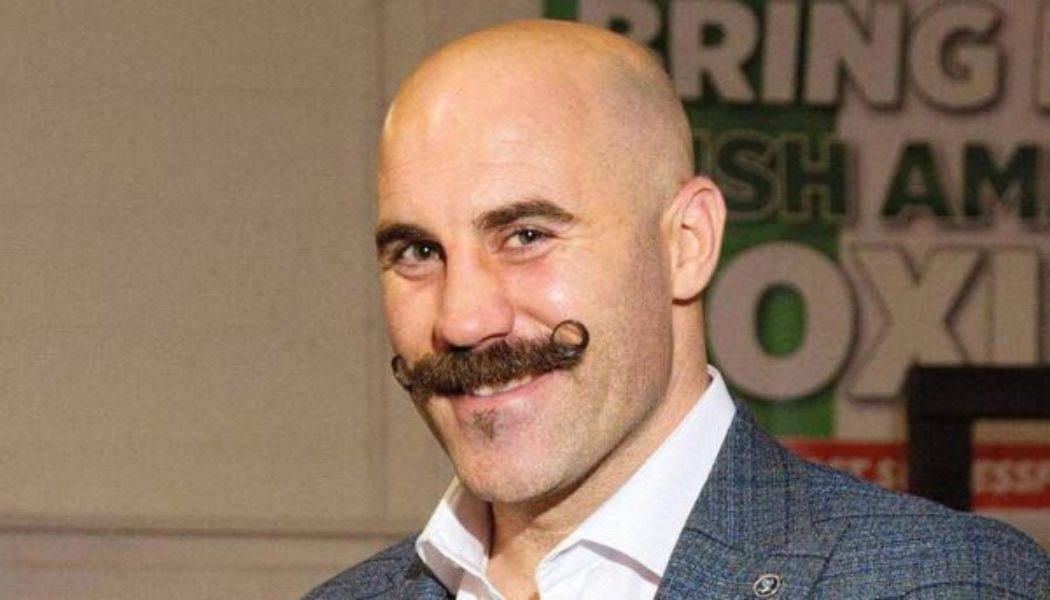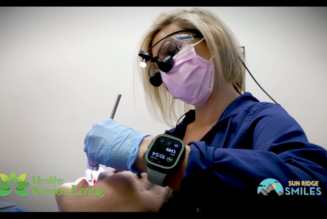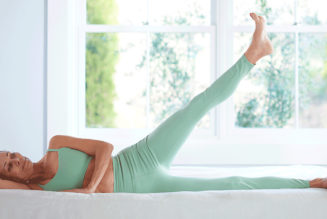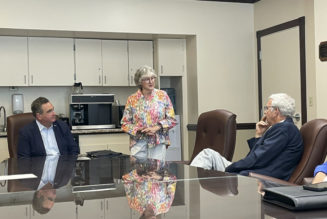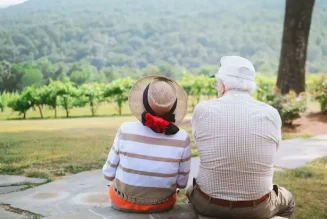Finian Murray has a parable about how health can be in the eye of the beholder.
“There is a story I heard one time about a guy going on a sun holiday, and he died out there, and when he came back, he was laid out and people said, ‘Sure, he looks like the picture of health, the holiday did him the world of good’.”
It is most likely apocryphal and Murray, who is the HSE’s senior promotion and improvement officer for men’s health, allows himself a laugh as he tells it.
But there’s little point in looking well when you’re laid out. What matters, says Murray, is taking care of your health in the here and now.
As one of the leading figures in the planning of Men’s Health Week (MHW)in Ireland and the co-author of the new (titled ‘Action Man’), he knows about the importance of staying fit and healthy.
This year’s MHW will run from Monday, June 12 until Sunday, June 18, culminating on Father’s Day, and this year’s theme is ‘the picture of health’ and what that picture looks like for each individual.
Males have higher death rates than females for almost all of the leading causes of mortality and at all ages, with poor lifestyles responsible for a high proportion of chronic diseases and late presentation to health services.
MHW is geared towards keeping health and fitness in the minds of men all year round. For Murray, it is more realistic than a new year’s resolution.
“You are asking them to go out in the middle of January and asking them to walk about a lit GAA pitch,” he says about those dark winter days when we all try, and sometimes fail, to shift the excesses of Christmas. “It is much easier to look after your health in the summertime.”
It is a view shared by other key personnel in making MHW happen. What began in the US in 1998 was first featured here in 2005, and has since grown around the world. In recent years, it has come to encompass mental as well as physical health and the often small changes that people can make to diet and exercise to help them be the best version of themselves. Or, in the words of Lorcan Brennan, training and resource development manager with the Waterford-based Men’s Development Network, “becoming our most authentic self”.
As many as 95 organisations have had an input into this year’s MHW and, according to Brennan, “partnership has been absolutely at the heart of that”.
Taking a big-picture view was key, he says. “When we started to look at getting onside with men’s health, we didn’t just look at men’s biomedical bits, at just the behaviours, we looked at men in community, gender, social determinants.
“That is at the heart of what we have tried to do, the Men’s Development Network: We were an organisation that, from the very beginning, was interested in promoting conversations with, and for, men.”
Men’s Development Network runs a number of successful programmes, but Brennan says MHW is a “conduit” for broader discussions on what it means to be a man. Yes, it is about exercise, eating well and boosting your fruit and vegetable intake, but it is also about dealing with emotions and being “a man who can acknowledge his sadness, to be able to cry about those things without experiencing fear or shame”.
In an increasingly toxic online world, this isn’t easy. Brennan is loath to discuss those more negative aspects of modern life, but says the so-called culture wars simply result in “siloing conversations that need to be had”.
Men’s Development Network operates evidence-based programmes, as does the National Centre for Men’s Health, based at Carlow South East Technological University (SETU). Dr Noel Richardson is the director of the programme there and speaks about a targeted, strategic and tailored approach to particular groups in society: Those working in construction, those from the Traveller community, men from minority groups, farmers. The days of the one-size-fits-all approach are over.
“People speak about those that are ‘hard to reach’. There is no such thing as hard to reach if you go about the programme the right way,” Richardson says.
Different workplace cultures present their own challenges. One example is the programme developed for the construction industry. It looked at the particular circumstances of the working day and the associated risks, but also at what Richardson describes as the “traditional macho culture, bravado, some would call it slagging and banter, but there is a fine line between banter and more insidious bullying and that culture”. It is yet another example of marrying the mental and the physical.
“On average, men still have a life expectancy lower than women and a key factor is unhealthy lifestyles: Men are more obese than women, dietary habits are not as good, men binge drink more and drink more. Having said all that, the pattern is changing for the better.
“The gap in life expectancy has narrowed from five years to three years, partly due to men getting better at looking after their health and women behaving more like men when it comes to their own health.
“Generally, I would say while there are still disparities between men and women, men are doing better than they were 20, 30 years ago: They are more physically active, smoking less, and there are more workplace initiatives.”
This fresh focus on men’s health also requires a flexible response when it comes to offering those programmes. Richardson provides the example of a programme primarily aimed at farmers and cardiovascular health. “We learned that farmers met the nurses in marts and the farmers ended up often talking about mental health issues,” he says. “The nurses [involved in the programme] didn’t see their role as just about cardiovascular, they took it on to look at other matters as well.”
For Richardson and others involved in MHW, such as Colin Fowler, director of operations at the Men’s Health Forum in Ireland (MHFI), it is down to first principles, including getting your advice from a reputable source rather than picking up on the latest whim, and visiting your GP. MHW aims to heighten awareness of preventable health problems for males of all ages, to support men and boys to engage in healthier lifestyle choices, activities and to encourage the early detection and treatment of health difficulties in males.
Each day offers a specific focus, with links to programmes and reading material to drive home the message.
As for that reading material, it includes the manual, the new Action Man booklet with its handy tips on small changes that can make a big difference.
According to Finian Murray, there could even be another element of strategy at play.
“One fella left it in their jacks at home for the young lads and found they were reading it in the loo.”
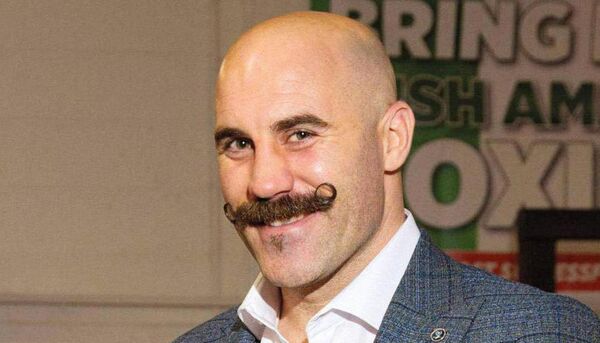 Gary ‘Spike’ O’Sullivan: minds his physical and mental wellbeing so he can hit the ring in peak shape. Pic: Doug Minihane
Gary ‘Spike’ O’Sullivan: minds his physical and mental wellbeing so he can hit the ring in peak shape. Pic: Doug Minihane
Men’s Health Week ambassador Gary ‘Spike’ O’Sullivan is almost ready for his family holiday to Salou – “I haven’t packed yet” – but boxing is never far away from his mind.
The 38-year-old has been hailed as Cork’s greatest-ever boxer, and even as the years tick by, he has no intention of hanging up his gloves. “I have set myself a goal, one of the biggest in my life,” the Mahon man says. “I am going to box for another five years, I want to do 20 years as a professional.”
He refers to research he has conducted on other Irish boxers and is confident he can hit his target. “I am in my 16th year, I would be very confident about getting to 20.”
He is right to be confident, particularly if he can continue his current training regimen. As we speak he might be thinking of his holiday in Salou but he will be running every second day and watching what he eats. In 36 bouts he has been on the losing side just five times. His instantly recognisable facial hair is aligned with pronounced technical skills and it’s all based on hard work. Yet for all this, he admits that sometimes he faces the same health and fitness challenges as many other men of a similar age.
“It is so easy to put on weight, and it’s not easy to out-train a bad diet, which I have at times,” he says. But the sweet science has also given him the discipline to stick to a healthy diet – that, and his ever-growing culinary skills.
“I would eat healthy,” he says. “I am having an omelette now, lots of vegetables. I mostly drink water and black coffee, and take a lot of vitamins on board.
“I am always reading up on foods that are good for me, I am a stay-at-home dad as well and I am always cooking – I cook for the family six days a week on average.”
Needing to make weight for a bout is part of the game, but he admits that boxers can have yo-yo weights between fights. He is candid about past struggles with mental health and how exercise – and lots of it – helped him to come out the other side.
Skipping rope and running are the cornerstones, daily treks of between 5km and 10km, plus saunas and rubdowns. He feels his body has rewarded his dedication, even as he continues with the everyday tasks such as prepping dinner and doing the school runs.
“I am too vain,” he says when asked if a fitness drop-off is possible when he eventually steps away from the ring. While he is unsure what he wants to do when he retires, he is already writing a column for the and is considering opening a cafe.
There is something else as well though, something that means he has to stay sharp.
“I have set a goal for myself long term,” he explains. “My son is six, when he is 18 I will be 50. Five a side [soccer] is one of my favourite things – I want to be competitive with my son.”
His son is soccer-obsessed, Gary says, so he is determined to stay competitive. “I want to go shoulder-to-shoulder with him.”

